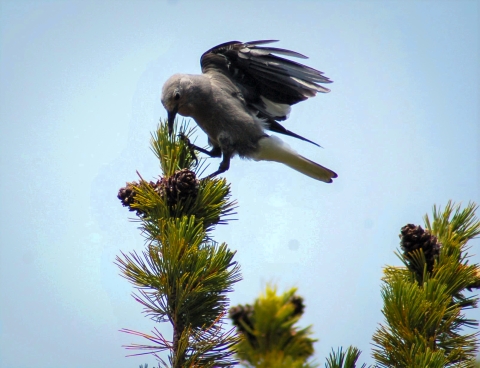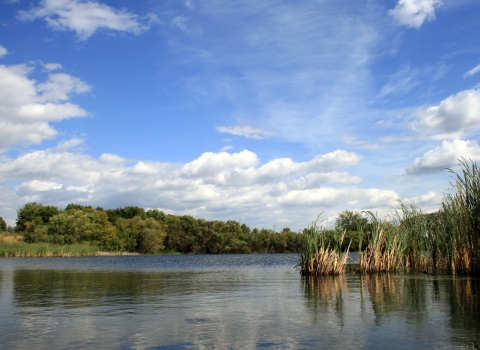DENVER — Today, the U.S. Fish and Wildlife Service (Service) is announcing a final action to list the whitebark pine (Pinus albicaulis) as a threatened species under the Endangered Species Act (ESA). The Service has concluded that the whitebark pine is likely to become endangered in the foreseeable future throughout its range. These protections follow a proposal to list the species as threatened in December 2020 with a subsequent public comment period. The proposal and final action to list the whitebark pine were made based on a rigorous Species Status Assessment, using the best available science.
“As a keystone species of the West, extending ESA protections to whitebark pine is critical to not only the tree itself, but also the numerous plants, animals, and watersheds that it supports,” said Service Regional Director Matt Hogan. “The Service now looks forward to continuing engagement with the many whitebark pine conservation partners during the recovery planning process to ensure this species continues to endure for future generations.”
Whitebark pine trees live in windy, cold, high-elevation or high-latitude environments across the western United States and southern Canada. As a keystone species, this five-needled pine influences the health and life cycle of other native plants and animals. In addition to providing a high-energy food source for animals, healthy whitebark pine stands also play an essential role in slowing runoff from snowmelt and reducing soil erosion.
White pine blister rust remains the primary threat to whitebark pine. This blister rust is a non-native fungal disease that harms whitebark pine trees across the West. Additional threats impacting the health of the species include mountain pine beetles, altered wildfire patterns, and climate change climate change
Climate change includes both global warming driven by human-induced emissions of greenhouse gases and the resulting large-scale shifts in weather patterns. Though there have been previous periods of climatic change, since the mid-20th century humans have had an unprecedented impact on Earth's climate system and caused change on a global scale.
Learn more about climate change . As a result of these threats, scientists estimate that as of 2016, 51% of all standing whitebark pine trees are dead.
Providing ESA protections to whitebark pine will boost new and ongoing research efforts to conserve the species, including future developments in combatting white pine blister rust. The protections for whitebark pine also make it illegal to remove, possess, or damage the tree on federal lands, or to engage in interstate or foreign commerce, including the prohibition of importing or exporting the tree. Unlike the prohibitions for federal lands, it remains legal to remove or possess whitebark pine on non-federal lands per the ESA, as long as those activities are otherwise allowed under state law.
Many partners are already engaged in restoration and conservation efforts for whitebark pine across the region. The U.S. Forest Service is collaborating with the Whitebark Pine Ecosystem Foundation (WPEF) and American Forests to promote strategic range-wide conservation of the species, with the support of the U.S. Fish and Wildlife Service. This effort will help guide the recovery process by leveraging the ongoing work of these partnerships to create an effective strategy to save the species from further decline.
“We have the tools and capability to make populations more resilient to these threats. Given the scale of this effort, we are approaching restoration both collaboratively and strategically," said Diana Tomback, WPEF policy and outreach coordinator and professor of integrative biology at the University of Colorado Denver. “One promising work in progress is the National Whitebark Pine Restoration Plan, a roadmap for restoration being developed collaboratively between the WPEF and American Forests, in consultation with the US Forest Service, the National Park Service, Bureau of Land Management, and several northwestern tribes.”
The Service is not designating critical habitat for this species as part of the listing because habitat loss is not a threat to the species’ continued survival; disease from white pine blister rust is the primary threat. A broad distribution of the species remains across more than 80 million acres in Washington, Oregon, California, Idaho, Montana, Wyoming, Nevada, and Canada. In the U.S., 88% of the species range is on federal land managed by the U.S. Forest Service, National Park Service, and Bureau of Land Management, allowing for thoughtful management of these lands through the ESA consultation process.
To allow for further conservation of the species, the Service has included a 4(d) rule with the listing of the whitebark pine. A 4(d) rule is one of the tools in the ESA that allows the Service to authorize activities that benefit and conserve the species. In the case of whitebark pine, the Service is allowing research, forest management, and restoration work on federal lands where it might otherwise be prohibited. This provision also allows for the collection of seeds on federal lands for Tribal ceremonial and traditional use.
The final rule to list the whitebark pine as a threatened species and accompanying 4(d) rule will be published tomorrow in the Federal Register and is available for public inspection today in the Reading Room: https://www.federalregister.gov/d/2022-27087.
To learn more about the whitebark pine, please visit the species profile page, additional questions and answers about the listing of this species can be found on our website: Q&As: Whitebark pine listing as Threatened.
Additional partner quotes:
“The Confederated Salish and Kootenai Tribes’ of Montana commend and honor the USFWS decision listing Whitenbark pine as a threatened species, said the Confederated Salish and Kootenai Tribes Forestry Department. “Native Americans continue to be stewards of the land and understand the need for balanced ecosystems. CS&KT does this by utilizing our traditional ecological knowledge taught from story and songs and applying it to western science techniques. Whitebark pine is not only a keystone species for this balance, but it is also part of our first foods and culture. CS&KT supports the listing Whitebark pine to help insure the protection and restoration of the land and of our culture.”
“We applaud the decision by the USFWS to list whitebark pine as threatened,” said David Neale, Whitebark Pine Ecosystem Foundation Director and emeritus professor of plant sciences at the University of California, Davis. “It also brings much-needed attention to the plight of this remarkable tree and builds further public support for the challenging restoration work ahead.”
“Whitebark pine is the center of an important web of life and provides valuable ecosystem services in western high-elevation forests.” said Diana Tomback, Whitebark Pine Ecosystem Foundation policy and outreach coordinator and professor of integrative biology at the University of Colorado Denver. “But it is facing an unprecedented convergence of lethal threats. We have the tools and capability to make populations more resilient to these threats. Given the scale of this effort, we are approaching restoration both collaboratively and strategically. One promising work in progress is the National Whitebark Pine Restoration Plan, a roadmap for restoration being developed collaboratively between the Whitebark Pine Ecosystem Foundation and American Forests, in consultation with the US Forest Service, the National Park Service, Bureau of Land Management, and several northwestern tribes.”


